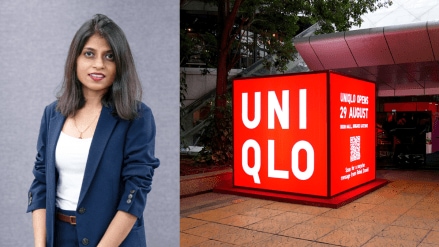Japanese retailer Uniqlo opened its first store in Bangalore last week, marking its entry into southern India and signalling a more aggressive expansion in a market where it has, until now, moved cautiously.
“Bangalore is a very key market for us, and it has been long-term coming,” Nidhi Rastogi, marketing director and head, Uniqlo India, told financialexpress.com. “Even before the store, Bangalore was our second-highest contributor to e-commerce sales, growing 180% year-on-year. We already knew the city loved the brand.”
Uniqlo’s India operations, launched in 2019, remain relatively small compared to rivals Zara and H&M. The company has just 16 stores after six years, though it recently crossed Rs 1,100 crore in revenue. “India is one of the high-performing markets for Uniqlo globally,” Rastogi claimed, adding that growth rates here are among the top three across markets.
A Slow but steady footprint
Despite strong year-on-year growth, Uniqlo’s rollout has been restrained. Real estate availability and high rental costs have slowed expansion, while its product positioning, more premium than mass-market fast fashion, but less trend-driven than Zara, puts it in a tricky middle ground.
The brand’s “LifeWear” philosophy, focused on functional basics like thermal wear, puff jackets and wrinkle-resistant shirts, differentiates it from rivals. But whether this approach resonates widely in India’s climate and price-sensitive market is still unclear. “People are moving from price conscious to value conscious,” Rastogi said, adding that consumers are willing to pay more for durability and comfort. Yet, industry analysts point out that in markets like Mumbai and Delhi, Uniqlo competes directly with cheaper local brands and global names that push aggressive discounting, a strategy Uniqlo has avoided.
Marketing: Immersive but selective
Around 60% of Uniqlo’s ad spend in India goes to digital campaigns, with the rest spread across out-of-home, print, and events. In Bangalore, the brand experimented with augmented reality cubes and local influencer tie-ups under a “LifeWear for Bangalore” campaign.
“In-store experience is as much marketing as social media,” Rastogi said, citing initiatives like self-checkout counters and click-and-collect. But unlike its rivals, Uniqlo has been less aggressive in mass-market advertising. That could be a limitation as it looks beyond metro hubs.
On India’s specific marketing strategy, Rastogi explained that the focus is on localisation without losing global identity. “Uniqlo’s India strategy is about localising to the market while keeping our global legacy. The focus is on how we can make LifeWear resonate with our customer in India by choosing a mix of products, media and influencers,” she said.
The Tier-2 question
So far, Uniqlo’s India business is overwhelmingly metro-focused. “Today, 85% of our business comes from tier-1 cities,” Rastogi acknowledged. While there are outposts in Lucknow and Chandigarh, most tier-2 presence is limited to single-store experiments.
By contrast, domestic competitors and even some global players have already begun testing deeper tier-2 and tier-3 expansion, often with regional-language campaigns. Uniqlo’s approach, for now, is to consolidate metro penetration first. “We are still very new in the business side… our first focus is tier-1 cities because that’s where our core TG lies,” she said.
Rastogi attributed Uniqlo India’s growth momentum to structural advantages in the market. “India enjoys the demographic benefit of a large audience of Gen Z and millennial customers. Since we are a relatively new brand market, the increased awareness, as well as increasing storefronts in the country, has contributed to making India a high-growth market,” she said.
Uniqlo’s India growth rates look impressive on paper, but they come off a small base. Whether the brand can replicate its Japan, China, or U.S. scale in India will depend on how it adapts to local realities, from climate diversity and regional preferences to sharper pricing competition. Its Bangalore store offers a test of that ambition. The city may be a natural market given its young, tech-savvy consumers, but Uniqlo’s challenge will be proving that its functional, no-frills model can cut through in a country where fashion retail is both fragmented and value-driven.
